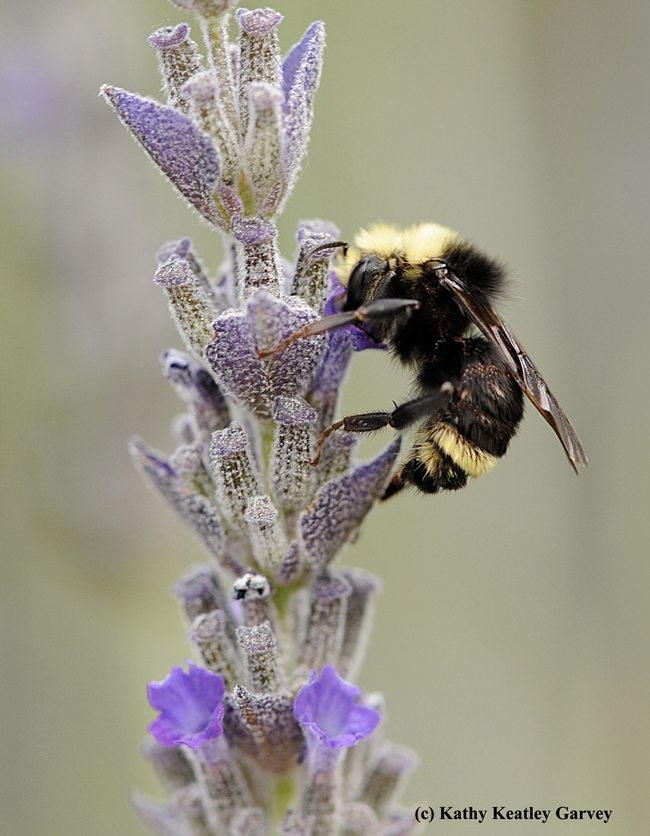
The United Nations designated May 20 as World Bee Day to raise awareness of the importance of pollinators, the threats they face and their contribution to sustainable development, according to its website.
It originated in 2018 when the government of Slovenia proposed that the United Nations declare May 20 as World Bee Day.
Why May 20? That was the day Anton Janša (1734-1773), a pioneer of modern apiculture, was born. "Janša came from a family of beekeepers in Slovenia, where beekeeping is an important agricultural activity with a long-standing tradition," relates Apimondia.
Today, however, let's pay tribute to the bumble bees. The late Robbin Thorp (1933-2019), UC Davis distinguished emeritus professor, UC Davis Department of Entomology and Nematology, used to point out there's only one bumble bee genus--Bombus--and that more than 250 species belong to this genus. California has 27 species of Bombus, according to Thorp in his 1983 published research, "Bumble Bees and Cuckoo Bumble Bees of California," written with colleagues Donald Horning Jr. and Lorry Dunning.
In his retirement, Thorp co-authored two books Bumble Bees of North America: An Identification Guide (Princeton University, 2014) and California Bees and Blooms: A Guide for Gardeners and Naturalists (Heyday, 2014).
Thorp, a member of the UC Davis entomology faculty for 30 years (1964-1994), continued his research, teaching and public service until his death in 2019 at age 85.
Franklin's bumble bee, Bombus franklini--a bee that he monitored for decades until his death in 2019--is now protected as an endangered species under the Endangered Species Act (ESA). It is feared extinct. Thorp, the last known person to see Franklin's bumble bee in its native habitat, spotted it in 2006 near Mt. Ashland. The bee inhabits--or did--a 13,300-square-mile area confined to five counties--Siskiyou and Trinity counties in California; and Jackson, Douglas and Josephine counties in Oregon. Its range may be the smallest range of any bumble bee species in North America, or even the world, he mused.
Today scientists are worried about the declining bumble bee population, a decline attributed to climate change, habitat loss, and pesticides. Bumble bees are especially known for their "buzz pollination" of such plants as tomatoes, peppers and cranberries. They help pollinate crops worth an estimated $3 billion in the United States alone.
"Due to threats including habitat loss, pesticide use and disease, sightings of the bee have declined by 89%, and it's disappeared completely from eight states. The decline of this once-common native bee is alarming and heartbreaking — and a harbinger of massive biodiversity loss across the country."--Center for Biological Diversity.
The dominant bumble bee species in California is the yellow-faced bumble bee, Bombus vosnesenskii. The Western bumble bee, B. occidentalis, used to be quite common. "It's one of four bumble bee species cleared by the state's Third Appellate District Court of Appeal for inclusion on California's endangered species list," according to a UC Riverside news story, published in July 2022.
Access the California Bumble Bee Atlas website to see how you can help. Meanwhile, how many species of bumble bees have you seen and photographed in California? Here are some of them.
Attached Images:
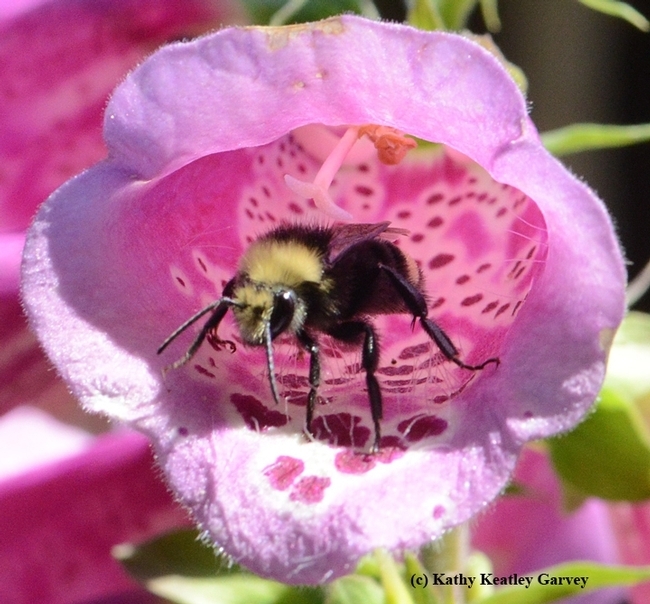
The yellow-faced bumble bee, Bombus vosnesenskii, emerging from a foxglove in Vacaville, Calif. (Photo by Kathy Keatley Garvey)
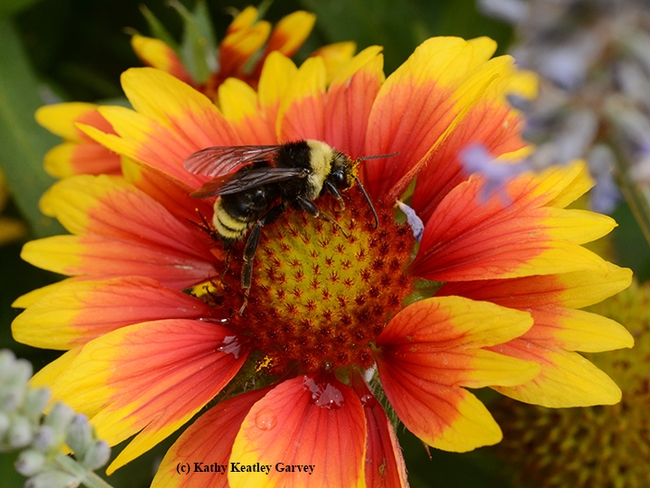
Bombus californicus, "the California bumble bee," foraging on blanket flower, Gaillardia, in Vacaville, Calif. (Photo by Kathy Keatley Garvey)
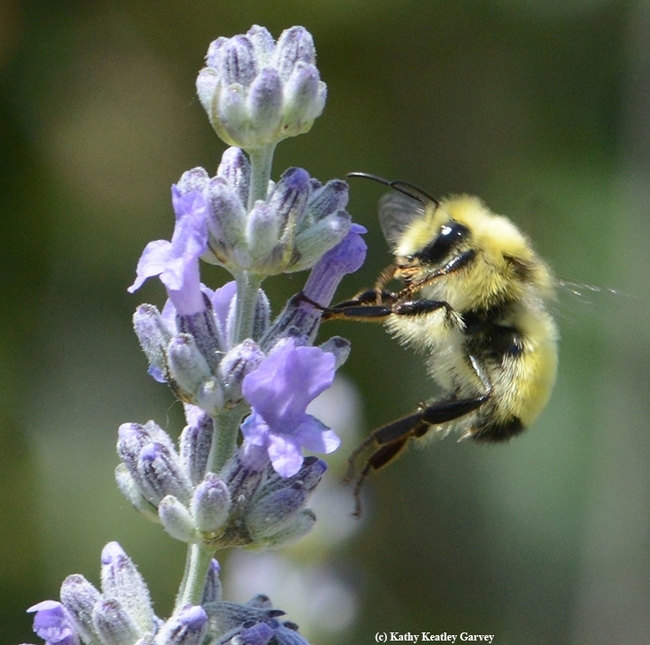
Bombus vandykei, the Van Dyke's bumble bee, foraging on lavender in a Vacaville, Calif. garden. (Photo by Kathy Keatley Garvey)
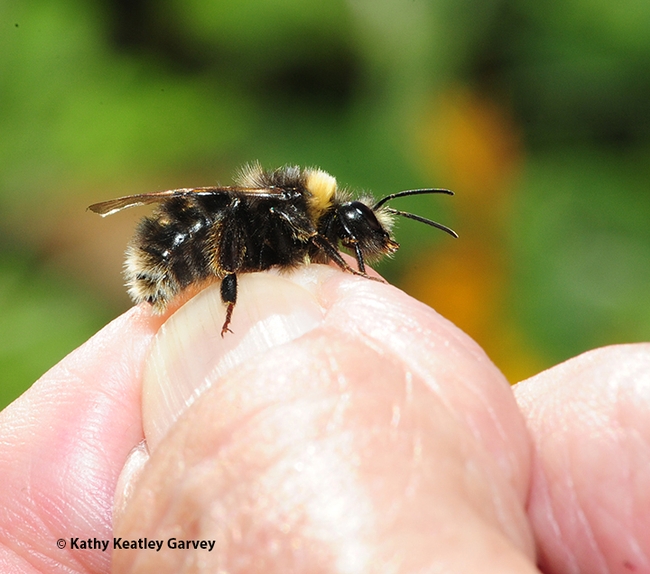
The western bumble bee, Bombus occidentalis, on the hand of the UC Davis distinguished emeritus professor Robbin Thorp (1933-2019). (Photo by Kathy Keatley Garvey)
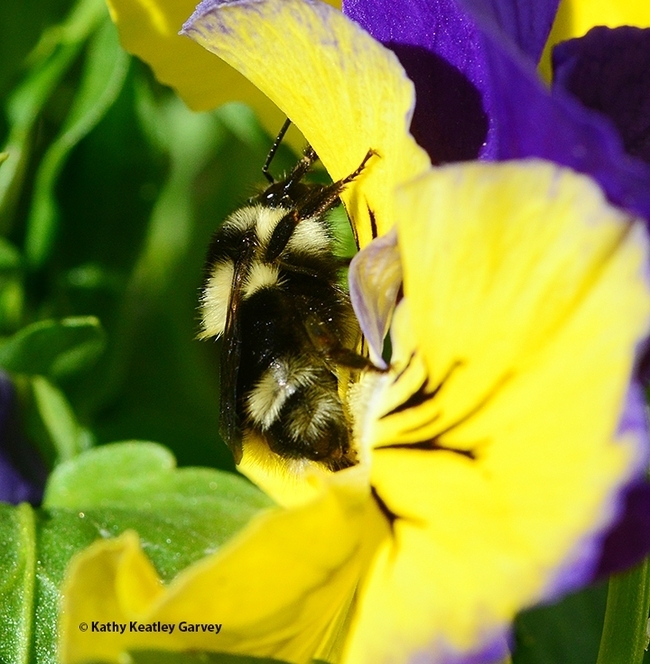
Bombus melanopygus, the black-tailed bumble bee, foraging on a pansy in a Vacaville, Calif. garden. (Photo by Kathy Keatley Garvey)
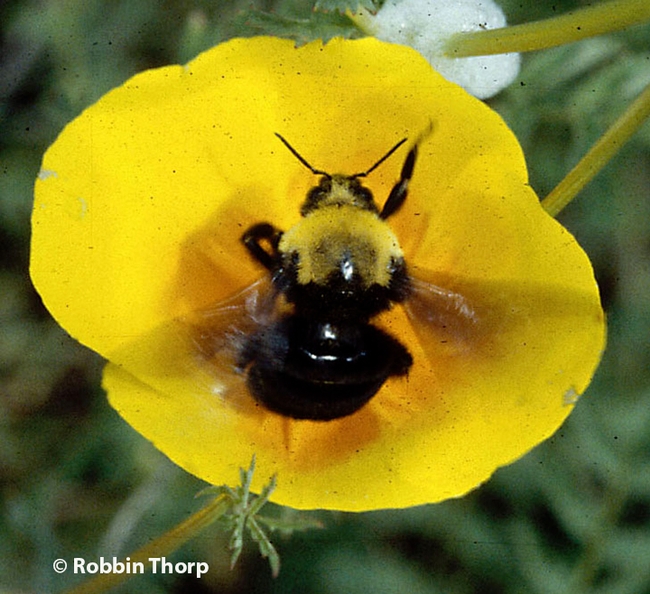
This is Franklin's bumble bee, Bombus franklini, monitored by Robbin Thorp (1933-2019) and now feared extinct. (Photo by Robbin Thorp)